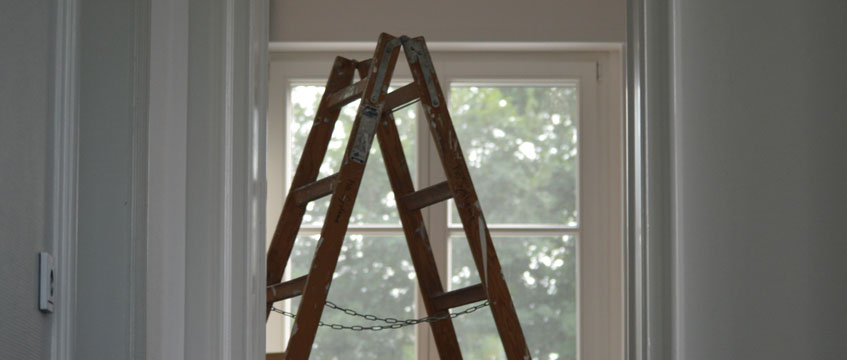A recent decision illustrates the pitfalls associated with alterations to residential property.
The headcount varies, but there are estimated to be roughly two million leasehold flats in this country. Typically, these are occupied under leases which demise the internal spaces to the tenant, with the landlord retaining the structure and exterior, the maintenance of which is carried out by the landlord and recouped through a service charge. So far, so normal.
Even where the lease is very long, the landlord also typically has some measure of control over the alterations the tenant might wish to carry out. There are various reasons for this. Although alterations are frequently described as “non-structural”, many will in fact weaken the structural integrity of the building. Even where that is not the case, tenants will not wish to put up with the misery of more or less continuous building works in a block with inadequate sound insulation and poor facilities for contractors.
So, a typical residential lease in a multi-occupied block will include some controls over alterations, in the shape of absolute prohibitions on structural works, and qualified prohibitions (ie subject to landlord’s consent, which commonly must not be unreasonably withheld) on non-structural works.
What is considered to be permissible?
Notwithstanding such controls, many flatowners appear to consider that they are entitled to carry out far-reaching works of the sort that house owners might implement. Bathrooms are refurbished with new showers; new kitchens are installed; rooms are knocked together. The question whether such works are permissible under the terms of the lease is often ignored. Just occasionally, this causes a dispute which makes its way to court.
One such case played out on appeal in the High Court in October this year in BMR Bagshot Ltd v Dorchester Mansions (1997) Ltd [2021] 10 WLUK 140, and the judgment exposes a number of interesting points worth exploring.
The facts are commonplace. The claimant tenant’s lease was for a term of 999 years, and demised the internal skin of the flat (one of 11 in the block); and prohibited alterations without the landlord’s consent, which could not be unreasonably withheld.
The tenant embarked on a scheme of works involving, among other things, the removal of internal walls and ceilings and the installation of a new en suite bathroom. When the landlord objected, the tenant responded that the works were limited to what it described as “light refurbishment”, and refused to stop. The landlord then brought proceedings for an injunction to halt the works.
The judge on appeal concluded instead that the works comprised “an extensive re-ordering of the flat”, and considered that the judge initially hearing the landlord’s claim had been right to grant an injunction. Most of the argument in court seems to have revolved around the question whether the works were “structural”.
The distinction stems from the celebrated decision in Bickmore v Dimmer [1903] 1 Ch 158, where the court decided that a clock that a jeweller had bolted above his shopfront was not an alteration (and thus did not fall foul of the covenant against alterations), on the footing that it was an obvious work to be carried out in the course of the tenant’s trade, that did not alter the form or structure of the demised premises.
In this case, too, the tenant’s works evidently did not affect the form or structure of the steel-framed building containing the flat. But the judge held that that was not the point. She said that it was wrong in the context of the lease to regard the concept of form or structure as necessarily limited to something that a structural engineer would regard as structural in terms of the overall building. The test had instead to be applied to the premises rather than the building as such. The form or structure of the premises comprise its inner skin: walls, floors and ceilings, all of which were being worked on extensively by the tenant.
That is surely right, given the points made above concerning the controls imposed by the lease to maintain the amenity of the block for all its occupants. But two other points emerge from the judgment which are also worth noting – because they frequently arise in practice.
Occupants take heed
First, although the judge did not base her reasoning on this, it seems to have been the case that the works were not confined to the demise (ie the internal skin of the flat), but involved some interference with the structure (for example, in hanging new suspended ceilings). Such works would not merely contravene the covenant against alterations, but would involve a trespass to the landlord’s reserved property. This point is often overlooked by tenants, many of whom purchase adjoining flats with the intention of knocking them through, despite the fact that the walls between the flats are not demised. The same is the case in relation to new services requiring ducting through exterior walls.
Secondly, all flats in the block had to contribute an equal percentage for hot water and heating bills. Accordingly, if there was a significant increase in load (which the tenant’s works in this case might cause), it would make a difference to other owners of the flats. This might not seem like a particularly weighty point in practice, but it does tend to find favour with judges.
The moral of the story is: do not obsess about whether works can properly be described as “structural” in taking a view on whether they should be permitted. Instead, consider the purpose the covenant against alterations was designed to achieve, given the close quarters in which flatowners have to live. If there is any doubt, advise your clients to choose a flat which more nearly suits their requirements, rather than buying one that will only fit the bill if altered.
Guy Fetherstonhaugh QC and Ashpen Rajah are barristers at Falcon Chambers








